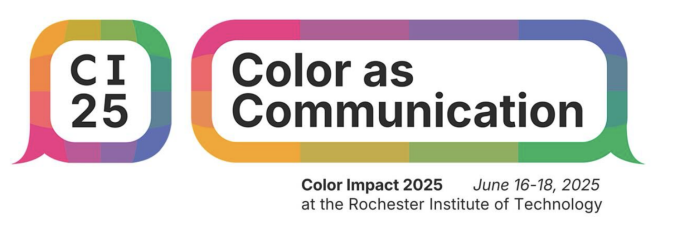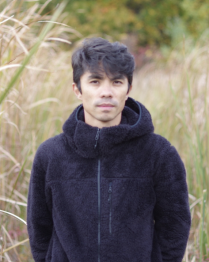Published March 24, 2025
Alumnus Felipe Shibuya presenting at CI25 Conference at RIT
2021 MFA Alum Felipe Leonardo Santos Shibuya will be presenting:
Wednesday, June 18 10:00-11:00AM
Presentations - Pigments
"Ecologies of Invisible Colors: An Artistic Exploration of Bacterial Pigments"
at the Color Impact 2025 Conference, hosted at RIT

The Color Council (ISCC) is the principal interdisciplinary society in the United States dedicated to advancing color research and best practices in industry, design/arts and education.
Rochester Institute of Technology, Rochester NY
June 16 - 18, 2025 Click here to register now
Gather with your friends and color colleagues for three days of fascinating keynotes, thought-provoking presentations, hands-on workshops, short courses, field trips, and special events.
Connect around a multitude of color topics, get feedback on your current work, explore adjacent interests and spark ideas in a way unique to this multi-disciplinary conference.
Network with your peers - old and new - in the stimulating environment of RIT and the Munsell Color Science Lab.
Learn from attendees from around the world and from across the spectrum of color disciplines including Science, Industry, Education, Art & Design.
A perfect blend of learning, innovation, and community building for anyone passionate about color!
Conference Presentations Schedule: https://iscc.org/page-18420
"Ecologies of Invisible Colors: An Artistic Exploration of Bacterial Pigments ", by Felipe Leonardo Santos Shibuya
Color is fundamental to all forms of life on Earth. Life as we know it is only possible due to the presence of oxygen, which plants, algae, and cyanobacteria utilize through a green pigment Äîchlorophyll Äîas the basis for photosynthesis. In nature, color serves various functions across species, but generally, it drives evolutionary processes such as camouflage, aposematism, and communication. Color can manifest at different levels, some of which are imperceptible to humans, such as those outside the visible light spectrum or on microscopic scales, where bacteria and viruses exist. Bacteria, present in virtually all environments Äîfrom human skin to the deep ocean Äîplay essential roles in biological processes like organic matter decomposition and nitrogen fixation in the soil. Despite their microscopic size, bacteria have evolved ways to become perceptible to other organisms, producing odors and colors. The pigments produced by bacteria, such as carotenoids and melanin, allow them to display a wide color palette, ranging from purple to red. As in other organisms, colors in bacteria serve critical functions for survival, as demonstrated by their role in antibiotic responses and protection against ultraviolet radiation and freezing temperatures. However, significant gaps remain in our understanding of how pigment production in these microorganisms is linked to communication. Through a series of artworks, I explore how visualizing and materializing these microscopic beings can generate new ecological and philosophical meanings. I propose that when bacteria display their colors, they communicate messages that not only make us aware of their presence but also foster a stronger connection between what is visible and invisible, enabling a future of sustainable collaborations.

Felipe Shibuya (he/him) is an American-Brazilian ecologist and artist who decided to adventure around the world. His journey began when he completed his PhD in ecology and nature conservation at the Federal University of Paraná. He then decided to explore the visual aspects he had included in his research, beyond the purely scientific perspective. He also holds an MFA in studio art from the State University of New York at Buffalo, where he worked with pigmented bacteria, with the intention of understanding how the colors they synthesize could be communication signals for humans. Being a scientist-artist enables Felipe to explore different forms of life, from bacteria to trees, using different methods, from microbiological culture to videos. However, all of his work involves aspects of his own identity, and he always highlights the visuality of nature. Currently, Felipe is an Assistant Professor in the Experimental and Foundation Studies Division at Rhode Island School of Design.